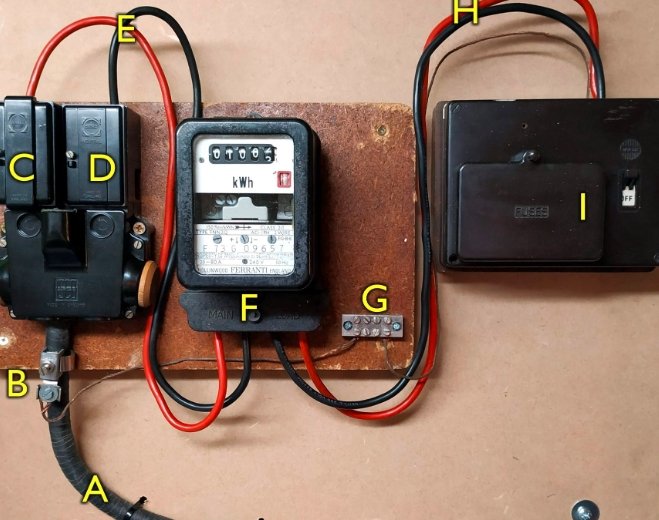Hundreds of thousands of UK homes may have an older electrical cut-out that links the mains power to indoor wiring and could overheat, sparking fire risks according to recent industry alerts. Experts warn that these black plastic units, installed from the late 1960s to early 1990s, degrade over time and pose dangers if not replaced promptly.
Understanding Electrical Cut-Outs in UK Homes
Every UK household relies on a small device known as an electrical cut-out to connect the external power supply to internal wires. This box, often found near the electricity meter, holds a fuse that controls the flow of electricity into the home for safe use.
The cut-out plays a key role in preventing overloads and ensuring steady power delivery. Distribution Network Operators own and maintain these units, and homeowners must never tamper with them without professional help. Modern designs use durable grey materials like glass reinforced polyester, which resist wear better than past versions.
In recent years, as homes age and electrical demands grow from devices like electric vehicles and smart appliances, the importance of these components has come into sharper focus. Faulty cut-outs can lead to disruptions or worse, highlighting why regular checks matter for family safety.

Risks Linked to Black Phenolic Cut-Outs
Older cut-outs made from black phenolic plastic, popular decades ago, show signs of trouble as they age. These materials can break down, becoming conductive and allowing heat to build up, which raises the chance of fires or shocks.
A retired senior engineer from a major network operator shared that he spotted patterns of failure starting around 2014. He described sleepless nights over cases where these units sparked or melted, putting lives at risk. Industry guidance from 2021 flagged this as a potential safety issue, urging operators to watch for overheating in specific setups.
Discussions among electricians point to degradation as the main culprit. Over time, the plastic tracks electricity in unintended ways, leading to hot spots. While not every unit fails, the risk grows in older properties with higher power loads, tying into broader trends of rising home energy use.
Industry Views and Real World Incidents
Energy firms maintain that properly installed cut-outs do not present fire hazards. They stress routine inspections and quick replacements when needed to keep risks low. However, experts in the field counter that real incidents tell a different story, with some fires traced back to these exact units.
Online forums and professional talks reveal stories of narrow escapes, like units failing during power surges and causing small blazes. One case involved a family home where smoke filled the air from a degrading cut-out, averted only by fast action. These accounts build a case for proactive checks, especially as UK weather events like storms increase electrical strains.
To illustrate the differences, here’s a quick comparison:
| Feature | Older Black Phenolic Cut-Outs | Modern Grey Polyester Cut-Outs |
|---|---|---|
| Material Durability | Prone to degradation and conductivity over time | Highly resistant to heat and wear |
| Installation Period | Late 1960s to early 1990s | Post-1990s onward |
| Fire Risk Level | Higher due to potential overheating | Low with proper fusing |
| Replacement Cost | Often free via DNO if flagged | Standard in new builds |
This table shows why updates matter for long-term safety.
Steps for Homeowners to Stay Safe
If you suspect an older cut-out in your home, contact your local Distribution Network Operator right away for a free inspection. They handle replacements and can confirm if your setup needs attention. Look for signs like discoloration, unusual smells, or flickering lights as early warnings.
- Check your meter area for a black box with wires; if it looks aged, note the details.
- Avoid any DIY fixes, as touching these can lead to shocks or void warranties.
- Schedule an Electrical Installation Condition Report every five years for full peace of mind.
- Consider adding surge protectors for extra defense against power spikes.
With 2025 bringing new rules for more circuit protections like RCDs, now is the time to review your home’s electrical health. These changes aim to cut down on faults across the board, linking directly to issues like cut-out failures.
Broader updates in electrical safety this year emphasize homeowner involvement. For instance, lenders now often require proof of safe wiring before approving mortgages, pushing more families to act. Tying into recent power cut worries from storms, staying ahead prevents bigger problems down the line.
Share your thoughts on home electrical safety in the comments below and spread the word to friends with older properties to keep everyone safe.


















